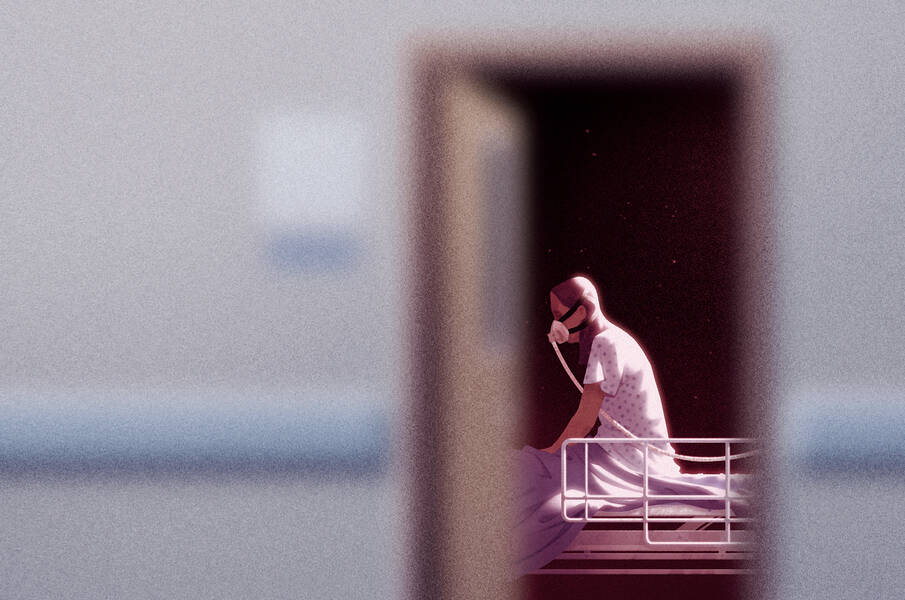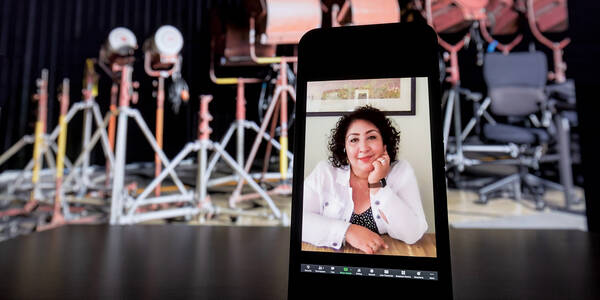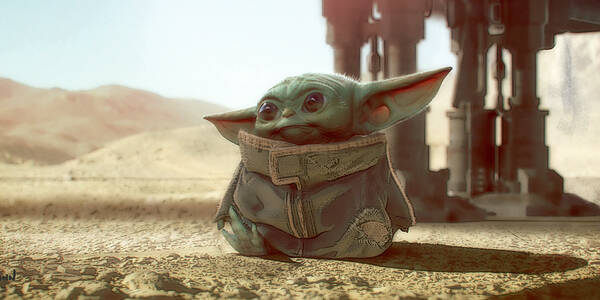
CREATIVE RESILIENCE: ALUM LEONARDO SANTAMARIA POURS EMPATHY INTO HIS PANDEMIC-ERA ILLUSTRATIONS
ArtCenter alumni have adapted to change during the COVID-19 pandemic in a wide variety of ways. Some turned inward, while others turned outward. They slowed down or sped up. This story is part of a series that focuses on three alumni who have showcased vulnerability and strength—and have embraced their creativity—during a time of chaos.
In his office in South Pasadena in the home that he shares with his partner, Kino Wu, Leonardo Santamaria (BFA 17 Illustration) sits in front of a poster by Jena Myung (BFA 16 Graphic Design) that reads “huge clouds. mind: subtle soft” in large white type. He wears a Ruby Ibarra baseball cap with the Tagalog words “Isang Bagsak” embroidered on it. The phrase, as featured in Filipino American rapper Ibarra’s song “US,” means “one fall,” to fall and rise together. “It’s a clap of unity at protests,” Santamaria says via Zoom.
During the COVID-19 pandemic, the award-winning first-generation Filipino American freelance illustrator has created digital illustrations filled with gauzy color and deep emotion for a range of clients, including The New York Times and The New Yorker. His illustrations, and the articles they accompany, address everything from grief to white supremacy.
I like doing work about sensitive topics that require empathy.
Leonardo SantamariaFreelance illustrator

For the March 2020 New York Times article “Disabled in the Coronavirus Crisis: ‘I Will Not Apologize for My Needs,’” by Ari Ne’eman, Santamaria illustrated the first person story’s exploration of how disabled people are at higher risk of being discriminated against when they’re in need of treatment. In the image, an out-of-focus wall and doorway reveals the profile of a person sitting up in a hospital bed, wearing a ventilator.
“I like doing work about sensitive topics that require empathy,” says Santamaria. “I think, in a way, that it goes back to being an emo teenager growing up in Orange County.”
Santamaria moved to South Pasadena in late November 2020, as COVID-19 cases were rising in L.A. County, after living in Alhambra with three roommates: two ArtCenter alumni and one ArtCenter student. A year earlier, in December 2019, he traveled to China for three weeks with Wu to meet her parents there. When the couple returned, news about the coronavirus was starting to trickle in.

“In the beginning it was hard financially,” says Santamaria. An advertising piece he worked on for The New Yorker, featuring a fiery meteor, was set to be displayed on billboards, and instead became an online video campaign. Assignments dried up. For Santamaria, who has attention deficit hyperactivity disorder (ADHD), listening to podcasts and music helped him concentrate on work amid the stress. He also worked out at home and played video games.
“I'm a social person, but I'm also introverted,” says Santamaria, as his Ragdoll cat, Esme, stretches her legs nearby.
As Santamaria's editorial assignments began to pick up, Wu, who works in visual effects, was impacted when the release date of her first film credit, Fast and Furious 9, was pushed back a year. That delay affected her work visa application. On top of that, Wu’s mother was diagnosed with cancer. With borders shut down due to the pandemic, Wu was unable to travel to China to visit her.
Santamaria ended up detailing their story in a May 2020 interview and illustration for The Washington Post, for a piece about 10 illustrators’ experiences as the U.S. grappled with 100,000 lives lost to COVID-19. During that time, anti-Asian bigotry was on the rise. In his illustration, a figure resembling Wu holds the hand of a figure resembling Santamaria, leading them out of a blue pool of water, lit by a light in front of them.
“She’s leading the way because ultimately there's not much I can do to help except be there for emotional support,” he says. “The light is a metaphor for hope.”














